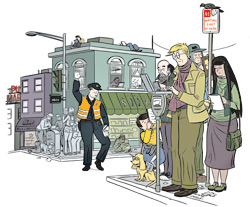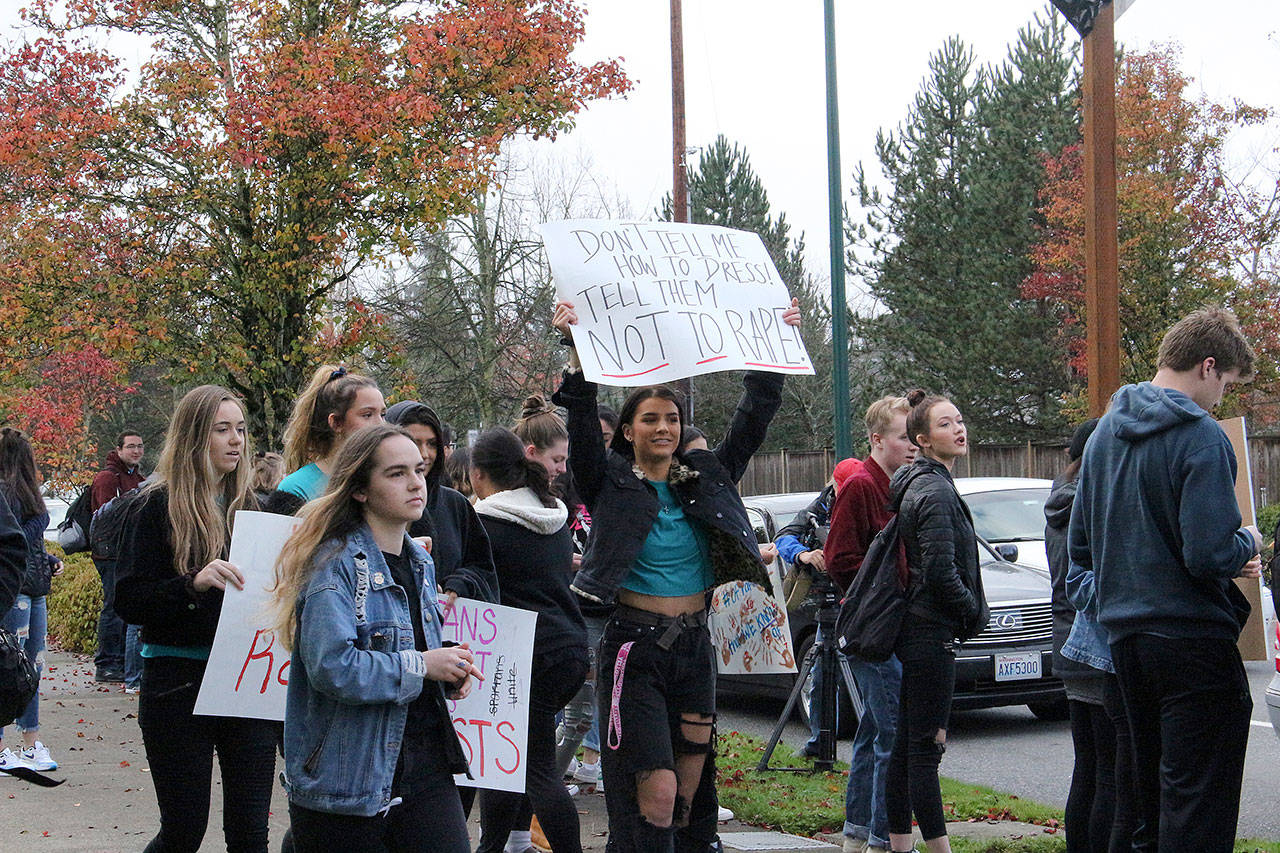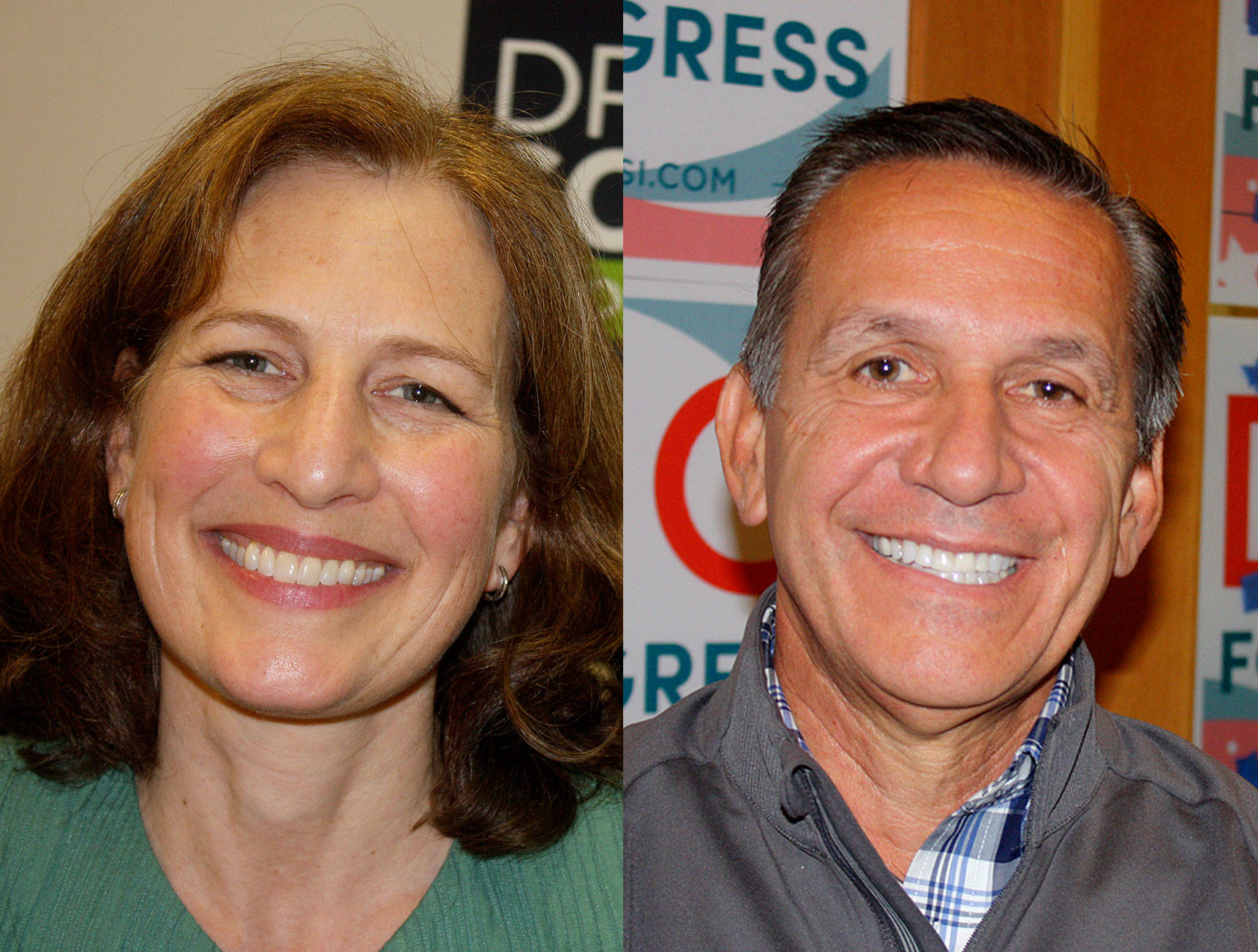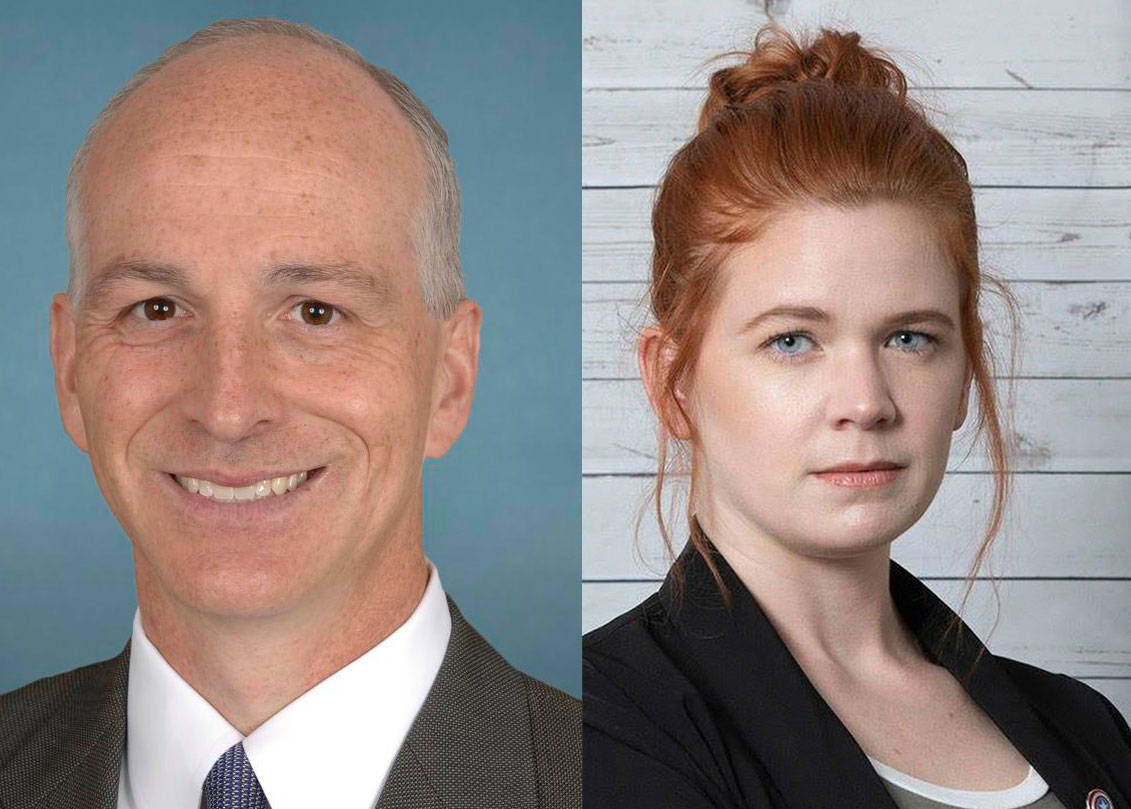Just try to find a free table and electrical outlet at your neighborhood coffee shop. Everyone’s busy working on their laptop, and they’re not just blogging. Seattle is crammed full of writers who don’t always make the Sunday New York Times Book Review. So it’s time to survey some of our homegrown talent, ranging from newbies to veterans to best sellers, to see what they’re adding to our sagging bookshelves. Sometimes under the radar, sometimes working in narrow genres, sometimes doing their own publishing and publicity, they’re tap-tap-tapping away at the keyboard in all corners of the Northwest—at the Starbucks, on the bus, or in office cubicles prepared to Alt-Tab back to that spreadsheet they should be working on. Your local bookstore has—or should have—a section showcasing local authors; here’s a sampling of what you’ll find there. Eds.
Chikodi Añunobi
These days, when Nigeria makes the news, the headlines generally concern government corruption, Western oil company payoffs and pollution, guerrilla insurgencies, and kidnappings in the disputed Niger delta drilling region. But debut novelist Añunobi looks back to a more peaceful past in Nri Warriors of Peace (Zenith, $19.95). About 12 centuries back. In that country’s southeastern precolonial Igbo region (usually pronounced “Ibo”), Añunobi’s homeland, the Nri kingdom flourished from roughly the ninth to the 15th centuries. Though this period is taught in outline in Nigerian schools, it wasn’t until Añunobi’s studies at the UW during the ’90s that he discovered the Nri left bronze artifacts as early as the ninth century. “I was interested in history, but this was my ancestors, my history,” he explains. His inference, supported by years of self-directed study while working in the software industry, was that the Nri could’ve used bronze weapons for conquest and expansion but elected not to. (Today, having come to the U.S. in 1987, Añunobi is a citizen residing in Bellevue with his wife and family.) Ironically, it was the dot-com crash and four months of unemployment that got him to finally write Warriors, a historical novel celebrating Nri culture and traditions of peaceful coexistence with other kingdoms.
“It doesn’t sell books to write about peace. It’s a historical fiction. More than half of it is real material,” says Añunobi. But, mindful of the limited media view of Africa (war, famine, AIDS, Western exploitation, etc.), he intends the book to be a lesson as well. “It’s another way of looking at Africa.”
As a result, even though he sees the need for regime change and more democratic institutions in Nigeria, where he visits regularly and hopes to publish his book, Añunobi says, “I have to be optimistic” about Africa. He sees for the continent an instructive example in the Nri, who were “ambitious but not selfish. Power shouldn’t intoxicate us.” Of course, African history is also American history—since the slave trade reached into the former Nri territory—and that lesson applies to our politics as well. BRIAN MILLER
Anjali Banerjee
A Calcutta-born, Berkeley-educated Olympic Peninsula resident who grew up in Canada with an adopted Native American sister and Italian stepmother, Anjali Banerjee knows something about cultural complexity. Previously a writer of young-adult novels, her Imaginary Men (Downtown Press, $13) draws on her experiences and the dislocation she felt when visiting India as a child and thereafter. “Canada felt like home, while India felt like a bizarre, distant planet,” she explains. “Still, my Indian heritage will always inform my life to some degree.” Thus was born protagonist Lina, a modern Bay Area woman who invents a fiancé to alleviate family pressure to enter an arranged marriage. In a Bend It Like Beckham–like culture clash, Men begins: “I’m allergic to India.”
Banerjee could’ve easily slipped into a scientific career, with both her parents Ph.D.s, but she was hooked on words, like her maternal grandma, a British-born author who married a Bengali and moved to India. “I guess I inherited her love of writing fiction. As a child, I typed stories, stapled the pages together, and pasted copyright notices inside the front covers.”
Thoroughly at home in the Pacific Northwest since 1997, she lives with her husband, three cats, and a black rabbit named Friday. Planned for September is Invisible Lives, about a sari shop owner in a fictional Seattle suburb “with the mystical ability to see into every heart but her own.” The local scenery is “so lovely,” Banerjee can’t help but be inspired: “I love the view from the top of Hurricane Ridge, or the trails in the Hoh Rain Forest. In Seattle, I love browsing Elliott Bay Book Co. on a rainy day, or strolling through the shops in Pike Place Market, or buying papaya at Whole Foods Market and lychee fruit in Uwajimaya.” SARA NIEGOWSKI
Mary Daheim
Her Emma Lord mystery series offers as its heroine a smart, wry, 50ish, slightly bohemian, unapologetically sexual weekly newspaper editor in a small Washington town. Emma’s insatiable investigative jones makes her the valued ally of laconic Sheriff (and ex-lover) Milo Dodge, and she’s aided by her imperious editor, Vida Runkel, wearer of flamboyant hats and nexus of all Alpine’s gossip.
Eighteenth in the series, The Alpine Recluse revisits the fictional—or is it?—Cascades hamlet. Daheim says that Alpine’s invented present takes off from a nonfictional past: “The town actually existed during the first 25 to 30 years of the last century. It was located about eight miles this side of the Stevens Pass summit off Highway 2, but there was no road. People arrived either by train or hiked a mile uphill. The original name of the town (and the mill) was Nippon (there was also a whistle-stop along the train route called Corea—the old spelling of Korea—both named for the railroad and other workers who’d come from those two countries).”
The mill owner and local timber baron changed the town’s name to Alpine, she continues, sometime around World War I. “The town, which was never more than about 200 to 300 people, lasted until the woods were logged out and [was] then evacuated and intentionally burned to the ground circa 1929. The only remnants are two foundation stones, probably from the mill or the social hall. . . . My mother’s family, the Dawsons, lived there for about six years (1916–1922). I never saw the town, but grew up hearing all these wonderful stories.”
And, of course, Daheim’s depiction of Emma has its autobiographical elements: “Emma Lord is based roughly on my own newspaper experiences in Anacortes and Port Angeles. I went directly from the UW to Anacortes, where I met the society editor—as was the title in days of yore—who knew everybody and everything, and could be very critical (“ninny” and “idiot” were some of her favorite descriptions). She inspired the Vida Runkel character, though she didn’t wear the weird hats.” GAVIN BORCHERT
Mary Daheim Third Place Books, 17171 Bothell Way N.E., Lake Forest Park, 206- 366-3333, www.thirdplacebooks.com. Free. 7 p.m. Wed., April 5. Also: University Book Store at Mill Creek Center, Bothell-Everett Highway and 153rd Street Southeast, Mill Creek, 425-385-3530, www.bookstore.washington.edu. Free. 7 p.m. Thurs., April 13. Also: Seattle Mystery Bookshop, 117 Cherry St., 206-587-5737, www.seattlemystery.com. Free. Noon Sat., April 15. Also: Queen Anne Books, 1811 Queen Anne Ave. N., 206-283-5624, www.queenannebooks.com. Free. 6:30 p.m. Tues., April 25.
Debra Dean
An actress turned academic turned author, Debra Dean had never even visited the primary site of The Madonnas of Leningrad (HarperCollins, $23.95), the Hermitage art museum in St. Petersburg, until after she’d written and sold her first novel, a historical thriller partly set in the smoldering ruins of World War II. Raised in Bellevue, she recalls, “I never had a clear sense that ‘I’m gonna grow up and be a writer.'” Her calling was Broadway, where she went straight after Whitman College. “I did a lot of understudying,” she says, in productions including Crimes of the Heart and Sister Mary Ignatius Explains It All for You, plus many touring shows. But in 1990, Dean changed paths: “I made a clean break with theater,” she says, going back to school and returning to Seattle a few years later.
After seeing a PBS documentary on the Hermitage, she began piecing together a plot too formidable for a short story, she remembers. Then came the extensive UW library research to back it up. “I was arguably the least qualified person to tell this story,” she laughs. Now a teacher at the UW, she’s found her Broadway experience to be an asset both with students and at author reading events. “The acting background turns out to be more useful than expected.”
And what happened when she and her husband finally visited St. Petersburg and the Hermitage? “I felt like I knew the museum like the back of my hand. It was very weird—I felt like I had already been there.” But since she expects her follow-up to be “more contemporary and closer to home,” the research won’t be such a problem. BRIAN MILLER
Debra Dean University Book Store (Bellevue), 990 102nd Ave. N.E., Bellevue, 425-462-4500, www.bookstore.washington.edu. Free. 7 p.m. Thurs., April 6. Also: Parkplace Books, 348 Parkplace Ctr., Kirkland, 425-828-6546. Free. 7 p.m. Thurs., April 13. Also: Bellevue Regional Library, 1111 110th Ave. N.E., Bellevue, 425-450-1765, www.kcls.org. Free. 7 p.m. Mon., April 17.
Hugo Kugiya
In his first book, Seattle Times–turned– Associated Press reporter Hugo Kugiya sinks his literary teeth into a mass-murder mystery wherein it doesn’t spoil the suspense to know at the outset the identity of the killer: the Bering Sea. In 58 Degrees North: The Mysterious Sinking of the Arctic Rose (new in paperback; Bloomsbury, $14.95), his brisk prose and award-winning reporting (originating in Newsday following the 2001 sinking) plunge us into a wintry world—the most dangerous season in the most dangerous place in the most dangerous profession in America. “The Bering accounts for the lion’s share of the deaths in the industry,” says Kugiya, who plies his trade both in Seattle and New York. “It’s real man’s work—you’re out on the ocean, man against nature, a real rite of passage. They look at it like a Jack London novel. Most seem to get over that quickly enough.”
The 15 doomed crew members did it for the money—the biggest money young locals can possibly earn this side of the tech boom. “You’ve got about a 98 percent chance of finishing a 20-year career fishing the Bering without killing yourself,” Kugiya continues. “To some, that sounds like good odds. You’re about 10 times more likely to die on the job fishing than you are if you’re a fireman or a cop.”
To make sense of the two minutes or so that ended their lives, Kugiya sketches the whole world of the fishermen, a world with one end in Ballard and the other on the edge of the Arctic Circle. Besides the nuts- and-bolts facts, he evokes the psychology. “A lot of guys are out there because they aren’t so well equipped for a conventional life on land. Maybe they have tempers or addictions or personality issues or legal problems. Fishing is an escape. You’re your own boss out there. No commitments.”
Poignantly, the Arctic Rose was “a hard-luck boat that had trouble making money.” A runty, converted Gulf of Mexico shrimper, it attracted novices and guys who couldn’t get on a better boat. Their inexperience was a fatal element in the perfect storm of bad luck that caused the tragedy. So, beyond the payday, why do they do it? “When you land a big catch, it can be a rush. Some guys, usually the young ones, look at it as a true adventure.” TIM APPELO
Holly Morris
The desk jockeys of the world sometimes dream of leaving cubicle life to see the world, but how many people actually pull the trigger and do it? Meet Holly Morris, the Seattle-based entrepreneur who left her job as editorial director at Seal Press years ago to seek out passionate, risk-taking women around the world and recount their exploits on TV, the Web (www.adventuredivas.com), and in print. Morris dubbed her enterprise Adventure Divas because, as she writes in Adventure Divas: Searching the Globe for a New Kind of Heroine (Villard, $23.95), “I embraced the first-person, power-injected moniker diva, and combined it with a philosophy of living I saw embodied in the women I respected.”
Armed with a team that included her mother, a former Chicago newscaster, Morris set off for Cuba in 1999 to film a TV pilot episode. PBS purchased the series, and commissioned episodes about women in India, New Zealand, and Iran. (Those episodes are now available on DVD through her Web site.) The companion book chronicles Morris’ thoughts during the show’s filming and traveling process. Morris, who loves Seattle’s “narcotic-grade coffee and ubiquitous wireless,” has more TV programming in the pipeline (most likely with PBS, though nothing is official just yet) and plans to launch a travel company, Adventure Divas Tours, this year.
Given so many irons in the fire, or hiking boots in the closet, her next book may have to wait a few years. Morris explains, “TV is more fun to make, and there’s a great camaraderie; print is more authentic and deeply satisfying to me. So I like to go back and forth.” What’s the credo behind her globe-trotting adventures? “Being comfortable with not knowing what’s going to happen next, courting the unexpected, hurling yourself out of your comfort zone.” Or out of your cubicle, in other words. MOLLY LORI
Doug Nufer
Writing a novel is difficult, but Doug Nufer intentionally sets out to make it extra difficult, employing formal constraints in the tradition of Georges Perec. Hence, his 2004 Negativeland contains no grammatically affirmative statements, and Never Again, published the same year, doesn’t use the same word twice. “Most of the stuff I write is based on formal restraints,” he explains, “but I also like format.” Hence, his forthcoming double novel, The Mudflat Man/The River Boys (Soultheft, price pending), revives an old pulp publishing technique of binding two cheap paperbacks together: Finish one, flip it over, and start another—almost like a 45. The format had its heyday with Ace Books from the ’50s to the ’70s; today they’re hipster collectibles.
Having moved to Seattle in 1977, Nufer had a writer’s epiphany 10 years later after encountering Perec’s avant-garde collage Life: A User’s Manual. “I’m not getting anywhere trying to write a midlist novel,” he decided. From there, it was a plunge into experimental writing and local lit mags—and, by the ’90s, curating the Titlewave reading series at that now-closed Uptown bookshop, “to open up my taste . . . put together different writers whose work didn’t connect together.” It’s a tradition he revived last year at Oseao Gallery’s live “A Leg to Stand On” Internet radio reading series, “with more coherent shows.” Crisp performance is valued over long-winded, tweedy traditionalist turns at the lectern. “There’s an element of kitsch in a literary reading,” observes Nufer, a professional wine vendor, who will be reading onstage with choreographer Erin Mitchell next month.
His coming double novel is a rewrite of stories first drafted some 20 yeas ago and set on a fateful New Jersey river. “I didn’t have to do a complete overhaul,” Nufer explains, but he’s now laced the two stories together, subtly, with a certain significant mystery female character. The goal is “a quick read, turn the pages” to get the reader to flip the book and discover connections between the two parts. And by the time you’re finished, Nufer may’ve already found a new constraint to inspire his next project. BRIAN MILLER
The Hearing Dance Fremont!, 4015 Stone Way N., 206-633-0812, www.dancefremont.com. $10–$20. 7 p.m. Sun., April 9. A Leg to Stand On Oseao Gallery, 1402 E. Pike St., 206-568-0291, www.oseao.com. $5. 7:45 p.m. Wed., April 19.
Heidi Raykeil
When you’re on the bus reading a book titled Confessions of a Naughty Mommy: How I Found My Lost Libido (Seal Press, $14.95), you draw plenty of stares. But Heidi Raykeil’s memoir is not nearly as lurid as it sounds. Yes, there’s plenty of frank talk about sex, but the emphasis is how great it was prepregnancy, and how unappealing and infrequent after.
“I have mixed feelings about the raciness of the title,” Raykeil says now. She started the project to try to figure out why her marriage—once close, supportive, sex-filled, and fun—had diminished to a series of chores and resentments. Chronicling the changes helped her understand them, and also rediscover her connection to her husband. Turns out that writing a book about love and sex with the help of your mate can be surprisingly romantic, she says.
Another surprise: The number of men who have read the book since its January publication, and thanked Raykeil for it. She explains, “Men ask their partners, ‘Why don’t you want to have sex with me?’ and it’s such a complicated and fraught issue that women give the simple answer: ‘I’m tired’ or ‘I don’t know.'” Raykeil says the book helps men understand their wives a little better, and also feel less isolated; they learn they’re not the only ones with listless lovers.
As www.literarymama.com’s “Sex and the Suburbs” columnist, Raykeil is often asked her opinion about the best time/place/conditions for rekindling romance. Our question: Is Seattle a good place to hunt one’s elusive sex drive? “Oh God, no,” she blurts. “It’s depressing. It’s horrible. It’s a really good place to be depressed and morose and soggy.” Her advice: “Go on vacation. Hawaii is best because you’re practically naked there. Everyone in Seattle wears layers, and layers aren’t good for your libido.” LYNN JACOBSON
Ann Rule

Legs rubbery, head foggy, Ann Rule doesn’t feel like talking this morning. “Pneumonia,” she says weakly. But throw her a bone— as in human remains—and suddenly she’s jabbering about death. “This is the most difficult book I’ve written,” says the author of Green River Running Red (new in paperback; Pocket, $9.95), the story of enigmatic serial killer Gary Ridgway. “I worked on it 20 years,” says the writer of two dozen New York Times true-crime best sellers, “always following the killings and believing one day that I’d be able to write it.”
The story of Ridgway’s 22 years on the killing floor was personally transformational, like that of the other serial slayer in her life, Ted Bundy, the bright, polite, good-looking fellow from Tacoma whom she knew personally, subject of her smash first book, The Stranger Beside Me. But, she explains, Bundy was a different fish from the mild-mannered, long-married, reliable truck painter Ridgway, killer of at least 49 Seattle-area women: “He fit so perfectly into that ambience of the highway,” the prostitute stroll of the SeaTac strip, “the pickup trucks and the guys in baseball caps. That allowed him to get by so long breaking a lot of the [profiling] rules. He changed some of the thinking about serial killers. Yes, he was a police junkie and full of quiet rage, but he was an idiot savant in the sense he was a genius at murder and nothing else.”
He also managed, Rule thinks, to show up at some of her earlier book signings. Rule’s daughter, Leslie Rule, author of paranormal stories, noticed the same mousy figure, never buying a book but staring from afar at Ann. The day after Ridgway was caught and his pictures were on TV, Rule says, “My daughter called and said, ‘It’s him!'”
Today, Rule gets a dozen e-mails daily at her Web site (www.annrules.com) from people suggesting heinous acts she should write about. “There’s always another book waiting,” she says wearily, looking ahead to a Georgia murder trial. The onetime Seattle cop, and a mom who raised five kids here after her husband died, would rather work in the Northwest.
She sounds relieved to discuss her current work, No Regrets, a true-crime anthology including the 1980s tale of Rolf Neslund, the ship pilot who memorably once rammed the West Seattle Bridge, then retired ignominiously to Lopez Island, where his wife later killed him, minced him in the bathtub, and cremated his remains in a burn barrel. That’s the way Rule likes death—close to home. RICK ANDERSON
Garth Stein
A Shoreline boy who moved to New York for college and film school, Garth Stein returned home 18 years later with wife and kids two days before 9/11. Talk about good timing. The 2001 move also marked a transition out of film and into print for Stein, who’d spent many difficult Manhattan years working in documentaries. On the side, “I wanted to be a screenwriter,” he explains, yet what was supposed to be his breakthrough script instead became his breakthrough novel, 1999’s Raven Stole the Moon, a family mourning road-trip saga set partly in Seattle and partly in Alaska, where Stein has relatives.
Wasn’t that an odd jump from nonfiction filmmaking to novel writing? “It’s all about storytelling,” says Stein. “I learned how to construct a story through documentaries.” Thus a new career was born, “without realizing how difficult it would be to write the second novel.” In New York, his first draft needed rewriting, he remembers, and “two months turned into two and one half years.” Recently named a Pacific Northwest Booksellers Association prize winner, How Evan Broke His Head and Other Secrets finally reached print in 2005, earning generally favorable reviews for its tale of surprise fatherhood, epilepsy, and charting a music career. (It’s new in paperback from SoHo Press, $13.)
And, during that arduous process, Stein even wrote his first play, Brother Jones, produced last year in Los Angeles. Now also working as a consultant in primary education, he likes Seattle’s small and collegial literary community. “In New York, there are no local writers. You’re either a big fish or you’re chum. I have a feeling that what I’m doing is part of a Northwest school.” At present, he’s working on two books, one related from a dog’s perspective. Instead of young hotshots being propelled to literary stardom in McSweeney’s, he sees more of a low-key craftsmanlike approach to writing here—even if that means accompanying a friend and fellow author on the ferry to a reading at Eagle Harbor Books on Bainbridge Island. In a crowd of a half-dozen, a friendly face counts. BRIAN MILLER
Garth Stein Queen Anne Books, 1811 Queen Anne Ave. N., 206-283-5624, www.queenannebooks.com. Free. 6:30 p.m. Thurs., April 6.
Solveig Torvik

Former longtime Seattle Post-Intelligencer associate editorial page editor Torvik, now retired in Winthrop, grew up under the influence of the First Scandinavian Commandment, which her book helpfully defines: “If a thing remains unspoken, it does not exist; if pain is given no voice, it lacks power to harm.” But that’s the sort of command a journalist is bound to break, and Torvik does it big-time in her debut novel, Nikolai’s Fortune (University of Washington, $24.95), a fictionalized saga of her family and the epic mystery at its heart—the vanished windfall her great-grandfather made in Astoria, Ore., after he left Scandinavia in 1883. More than a century later, Torvik investigated Nikolai’s inexplicable disappearance, and a more invaluable treasure, the tale of how she—and her difficult mother—came to be. (Nikolai lived in my ghost-town hometown, Deep River, Wash.; one research source for the novel is my historian uncle, Carlton Appelo.)
Torvik explains that the book is a “historical novel/memoir based on the lives of four generations of women in my family in Finland, Norway, and Idaho. I did not want to write a memoir, but I finally had to face the fact that if I were to complete a book dealing with the generational consequences of broken bonds between mothers and daughters, I would have to enter the story.”
Her saga begins in 1800s Finland with a scandalous affair between Torvik’s dairymaid great-grandma Marie and Nikolai, “who unknowingly leaves her pregnant (with my grandmother Kaisa) when he sails for America to make his fortune.” When Kaisa is 12, mama Marie sends her on foot to flee famine-ravaged Finland for Norway. “Kaisa walks, in winter, nearly 500 miles across the mountains of Lapland to her new home in Norway. There, she marries a Sami, becomes a destitute young widow with three children to support, twice gives birth to children conceived by rape, endures the prejudice of Norwegians toward Finns, and finally in desperation gives away her children and goes to work as a cook in a desolate copper mine.”
Torvik traces the family saga up to her own generation, with astounding instances of child slavery, a childhood in Nazi- occupied Norway, and dark family secrets revealed only recently. As over-the-top as it all sounds, Torvik says, “The main characters and major events are real. It’s a story of tough women toughing it out in a tough world.” TIM APPELO

















